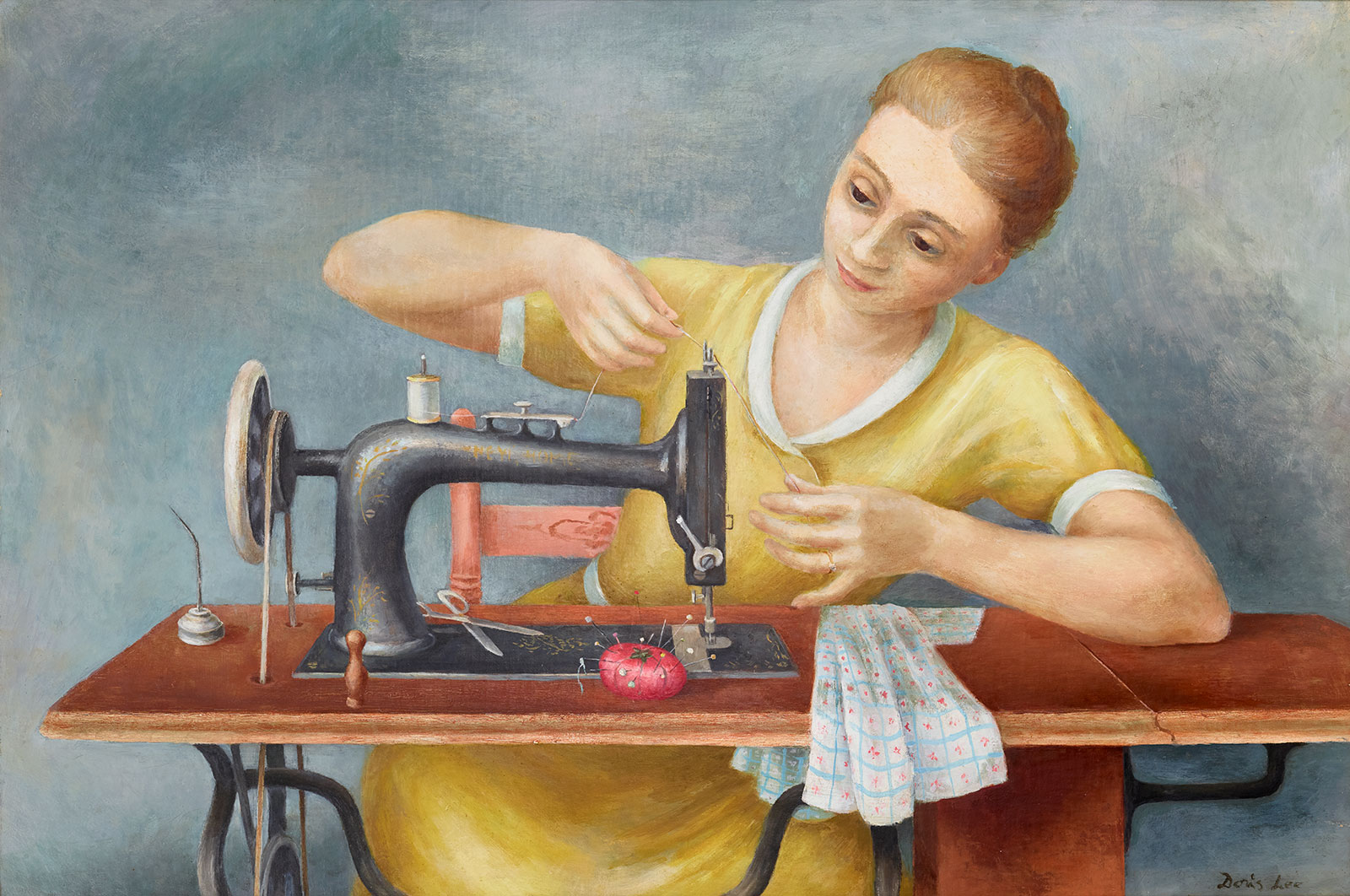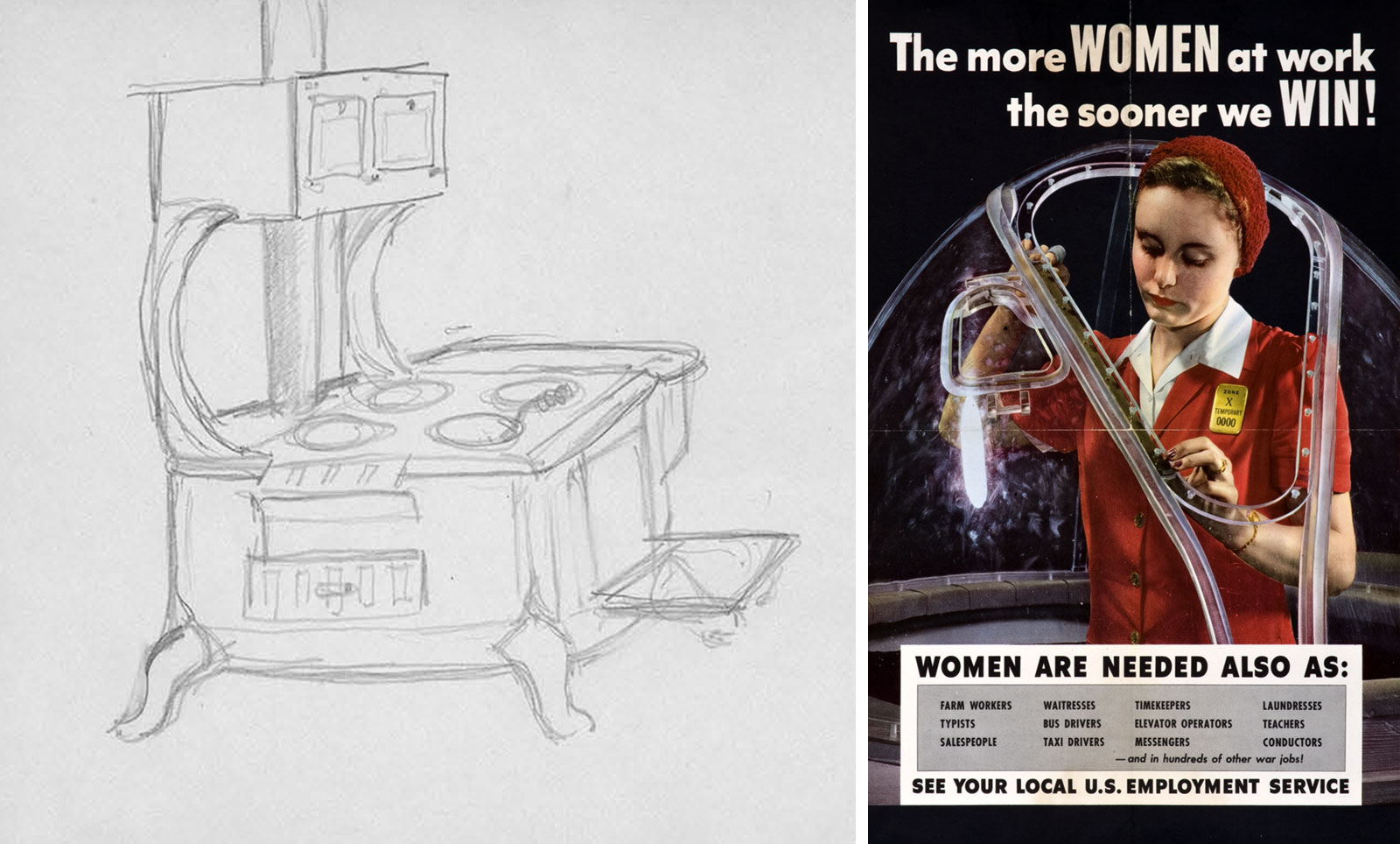March 29, 2022
Doris Lee's Painting of a Girl Sewing

Painting, Girl Sewing, c. 1931
Doris Lee (American, 1905–1983)
Woodstock, New York
Oil on canvas
The Wolfsonian–FIU, The Mitchell Wolfson, Jr. Collection, TD1993.93.2
The work of American painter Doris Lee has experienced a renaissance of late. With a major retrospective exhibition traveling nationally through 2025, Lee is one of many 20th-century female artists whose significance has come to renewed attention in recent years.
Lee first emerged as an American Scene painter, employing the visual language of historic and romanticized Americana in her paintings of rural families, farms, and gardens. New scholarship, however, has touched on the ways that she upended the expected narratives of these idyllic pictures, embedding in her work "a shimmering feminism" as The New York Times recently put it. Her painting Girl Sewing, held in the Wolfsonian collection, is one such example.
In this canvas, a young woman (possibly Lee herself) sits at a sewing machine, her head cocked in concentration. Produced in the early 1930s, when Doris and her then-husband Russell Lee had just moved to an artists' colony in Woodstock, New York, the painting reflects the role of woman as homemaker. The sewing machine is as much a subject of the painting as the sewer herself: an old-fashioned treadle-operated model rather than the modern electric variety that would have been available to a woman of Lee's means. This purposeful artistic choice, coupled with her decision to emblazon its side with the phrase "New Home" instead of a corporate brand, reveals Lee's interest in mixing idealized past with forward-looking present. Lee made a practice of sketching historical technology such as wooden stoves and wagons, and her renaming of the antique sewing machine, most likely a Singer model, injects a sense of surreal fantasy into what otherwise seems a straightforward image.

Together, sewer and sewing machine present a vision of domestic labor and remind the viewer that homemaking is real work requiring great concentration and effort. The portrait sitter's hands are a clear articulation of the exertion of housework; her fingers carefully thread the needle, performing the finicky steps necessary for the sewing machine to function. Her hands are a curious match to those of a female wartime worker, who takes similar care in how she rivets together cockpit parts for fighter jets, in a United States Office of War Information poster from 1943 (above right). The worker performs manual labor on the production line, but her manicure and jewelry indicate that she still has a role to play as an upholder of gender norms. Doris Lee's sitter, meanwhile, carries out the quintessentially female acts of keeping a house, and in doing so performs highly skilled and mechanized labor. These two representations are unintentional pendants, each projecting gender ambivalence and revealing the socially complex layers of women's work.
Lee infuses her painting with two seemingly contradictory ideas: that homemaking is peaceful and contemplative, and that it is hard and practiced. These dual meanings emerge throughout her oeuvre, a reminder that the representation of women is a complicated undertaking, and that feminist art takes many forms.
– Shoshana Resnikoff, curator
